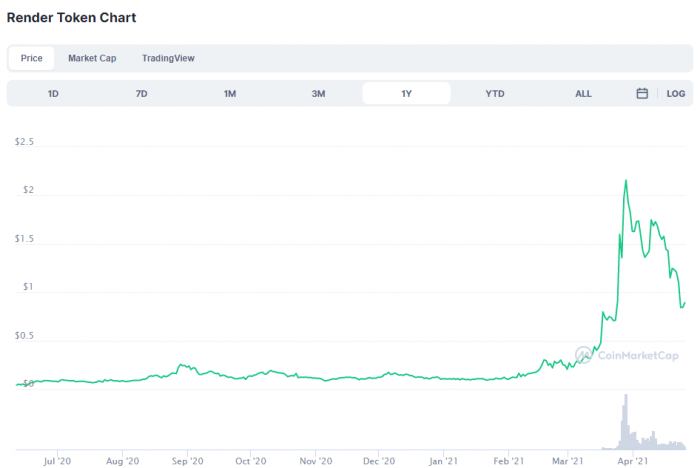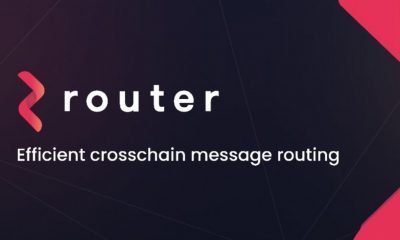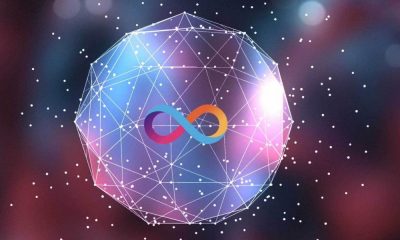Render Token Investor
Investing In Render Token (RENDER) – Everything You Need to Know
Securities.io is committed to rigorous editorial standards. We may receive compensation when you click on links to products we review. Please view our affiliate disclosure. Trading involves risk which may result in the loss of capital.
Table Of Contents
The Render Token (RENDER) project introduces a host of new opportunities to digital creators. The network was built to provide content creators access to distributed GPU rendering services on the blockchain. The platform allows users to share their GPU power in a seamless manner. In return for their efforts, users receive rewards. In this way, Render Token provides much-needed computational power to artists, developers, and studios.
What Problems Does Render Token (RENDER) Solve?
Render Token allows anyone to share their unused GPU power with ease. The system eliminates the technical barriers associated with network computational systems. The system connects users looking to perform render jobs with people who have idle GPUs. This strategy saves the users significant time and money since they don’t need to purchase high-end computers to handle these tasks in-house.

- Render Token – Twitter
Wasted Resources
Many people are unaware of the growing demands of the digital community in terms of processing. The digital creation market has continually expanded over the last decade. This growth has created more demand for high-end rendering services. In most instances, users' GPUs remain idle when they are not rendering their own work. This scenario creates a situation in which new users have to purchase new GPUs. In the end, material and electrical consumption go up.
Render Token offers a decentralized system that tracks and manages render jobs. The platform's strategy helps to provide more efficiency to the gaming, media, augmented reality, VR, medical, and industrial sectors. This efficiency directly equals a smaller carbon footprint for the industry.
Lack of Performance
Another major concern for these industries is a lack of resources. Anyone who works with high-end rendering demands can tell you the process is time-consuming and requires a lot of energy. Render Token leverages its distribution network to create a decentralized GPU rendering pool. This rendering power is immediately available to all network participants.
Benefits of Render Token (RENDER)
There are a lot of benefits gained when you join the Render Token network. The protocol enables anyone with a modern GPU to contribute their rendering power in exchange for tokens. Regular users earn profits in a secure and simplified manner and clientele can save on hardware investment costs. In this way, Render Token (RENDER) bridges the gap between GPU supply and demand.
Scalability
One of the core requirements of Render was to develop a scalable network. The GPU rendering business model requires the network to be able to scale up to meet growing demands in a linear fashion. The protocol leverages blockchain tech to provide an efficient, powerful, and capable alternative in the market. Render Token users can process intricate files that would be difficult to complete locally.
Options
Render Token users have more options. They can create more robust environments. The expandability of the network permits developers to design more interactive and immersive landscapes.
Digital Rights Management
Another core desire of the development team behind Render Token is its digital management systems. Currently, there is no globally accepted, universally accessible, storage location for content creators. The current options in the market are all centralized. Sadly, this leaves creators at the mercy of centralized platforms that can censor or delete their data without warning.
Render Token leverages the un-alterability of blockchain technology to ensure that creator’s rights are protected. Additionally, the system can register when these works are accessed. In this way, artists and content developers can better control the use of their works. Impressively, the network can be set up to automate royalty payments as well. These systems will provide more ROI potential for developers.
How Does Render Token (RENDER) Work?
The Render Token ecosystem lives on the Ethereum blockchain. The network inherits the security and interoperability of this network. For example, RENDER token holders can save their tokens in any ERC-20 compatible wallet. Additionally, these tokens can be traded on any ERC-20 compatible exchange.
In the Render Token ecosystem, users submit their jobs to the community. The platform automatically calculates the amount of RENDER required to perform the job. This data is then sent as an attachment that details the specifics to a smart contract. The information is then broadcast across the Render Network. Notably, GPU owners use OctaneRender to process the requested job.
OctaneRender
OctaneRender serves a critical role in the Render Token network. Specifically, OctaneRender uses RENDER to distribute the framework of the existing rendering service. The entire process eliminates the middleman to create a more responsive UX.
RENDER tokens
RENDER tokens are the main utility token of the platform. Users send RENDER to the individuals performing the render work. Users can also send value globally utilizing this token. A small percentage fee is charged on every RENDER transaction which goes towards the future development and running of the Render Network.

- Render Token – Twitter
RENDER is available on a variety of top centralized exchanges. Specifically, HTX, HitBTC, KuCoin, Hoo, and Gate conduct the highest trading volume globally. Currently, there are no fiat/RENDER trading pairs at this time. As such, you will first need to convert your fiat over to Bitcoin or Ether. Once you have crypto, you can then trade directly for RENDER.
History of Render Token (RENDER)
Render Token is a subsidiary of OTOY. OTOY entered the market in 2008. The platform officially launched Render Token in 2017. Since that time, the platform has seen considerable expansion. OTOY now has over 60 employees and four offices. The company's headquarters is in Los Angeles, California.
How to Buy Render Token (RENDER)
Render Token (RENDER) is available on the following exchanges:
Uphold – This is one of the top exchanges for United States & UK residents that offers a wide range of cryptocurrencies. Germany & Netherlands are prohibited.
Uphold Disclaimer: Terms Apply. Cryptoassets are highly volatile. Your capital is at risk. Don’t invest unless you’re prepared to lose all the money you invest. This is a high-risk investment, and you should not expect to be protected if something goes wrong.
Coinbase – A publicly traded exchange listed on the NASDAQ. Coinbase accepts residents from 100+ countries, including Australia, Canada, France, Germany, Netherlands, Singapore, the United Kingdom, and the United States (excluding Hawaii).
Kraken – Founded in 2011, Kraken is one of the most trusted names in the industry and offers trading access to over 190 countries, including Australia, Canada, Europe, and the United States (excluding Maine, New York, and Washington state).
How to Store Render Token (RENDER)
If you seek to make a major investment in RENDER if you are planning on HODLing this crypto for long periods of time, a hardware wallet is the best option. Hardware wallets keep your crypto stored offline in “cold storage.” This strategy makes it impossible for online threats to access your holdings. The Ledger Nano S or the more advanced Ledger Nano X both support Render Token (RENDER).
Render Token – A New Approach for a Growing Market
Render Token appears to be well-positioned in the market. There has been a growing demand for GPU rendering services over the last five years. Notably, Render Token can save the industry tons in hardware costs. At the same time, it provides regular users with the opportunity to earn passive rewards. For these reasons, you can expect to see this project expand in the coming months.
David Hamilton is a full-time journalist and a long-time bitcoinist. He specializes in writing articles on the blockchain. His articles have been published in multiple bitcoin publications including Bitcoinlightning.com
You may like


Investing In Helium (HNT) – Everything You Need to Know


Investing In Illuvium (ILV) – Everything You Need to Know


Investing In Gala Games (GALA) – Everything You Need to Know


Investing In Router Protocol (ROUTE) – Everything You Need to Know


Investing in Hedera Hashgraph (HBAR) – Everything You Need to Know


Investing In Internet Computer (ICP) – Everything You Need to Know